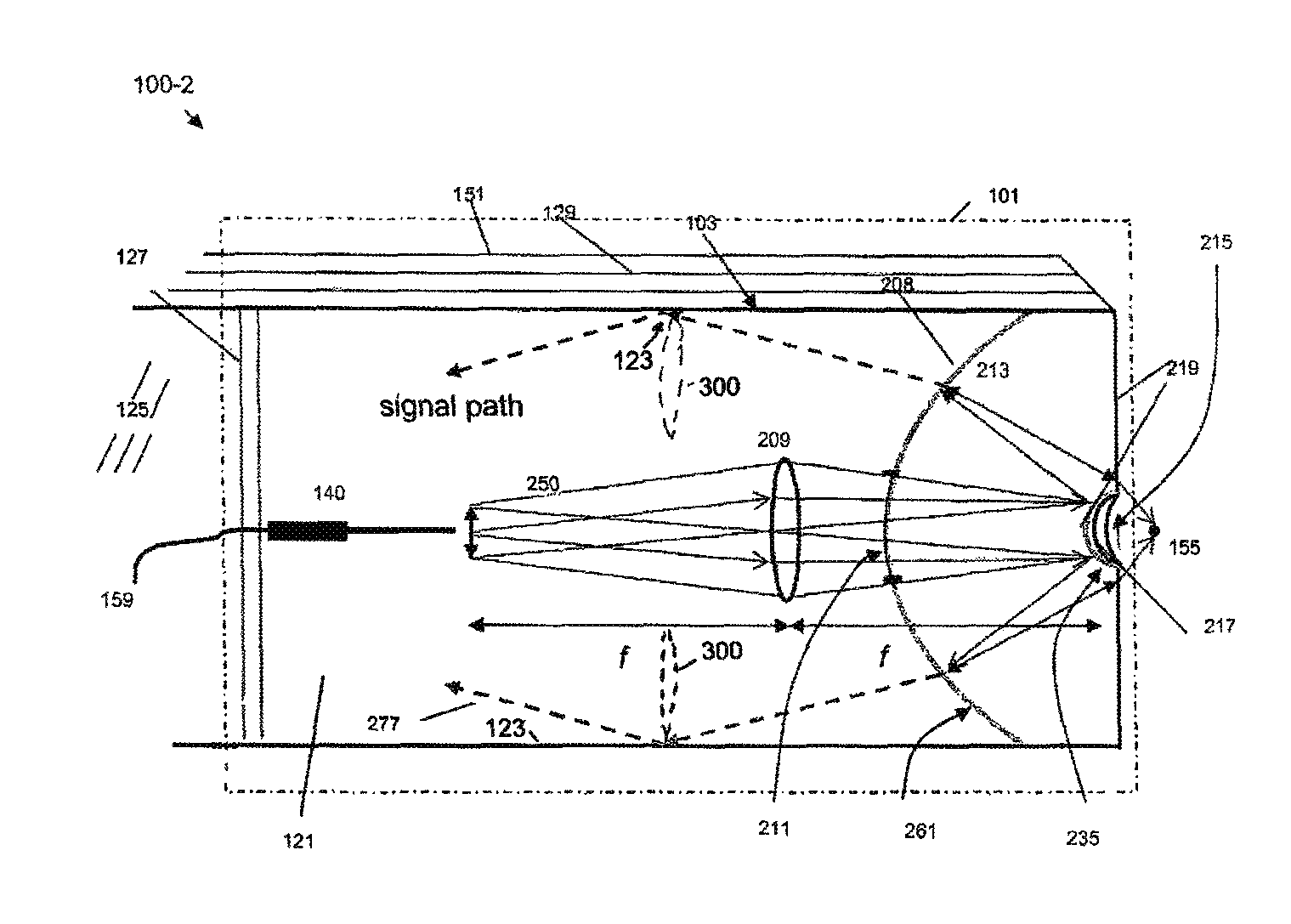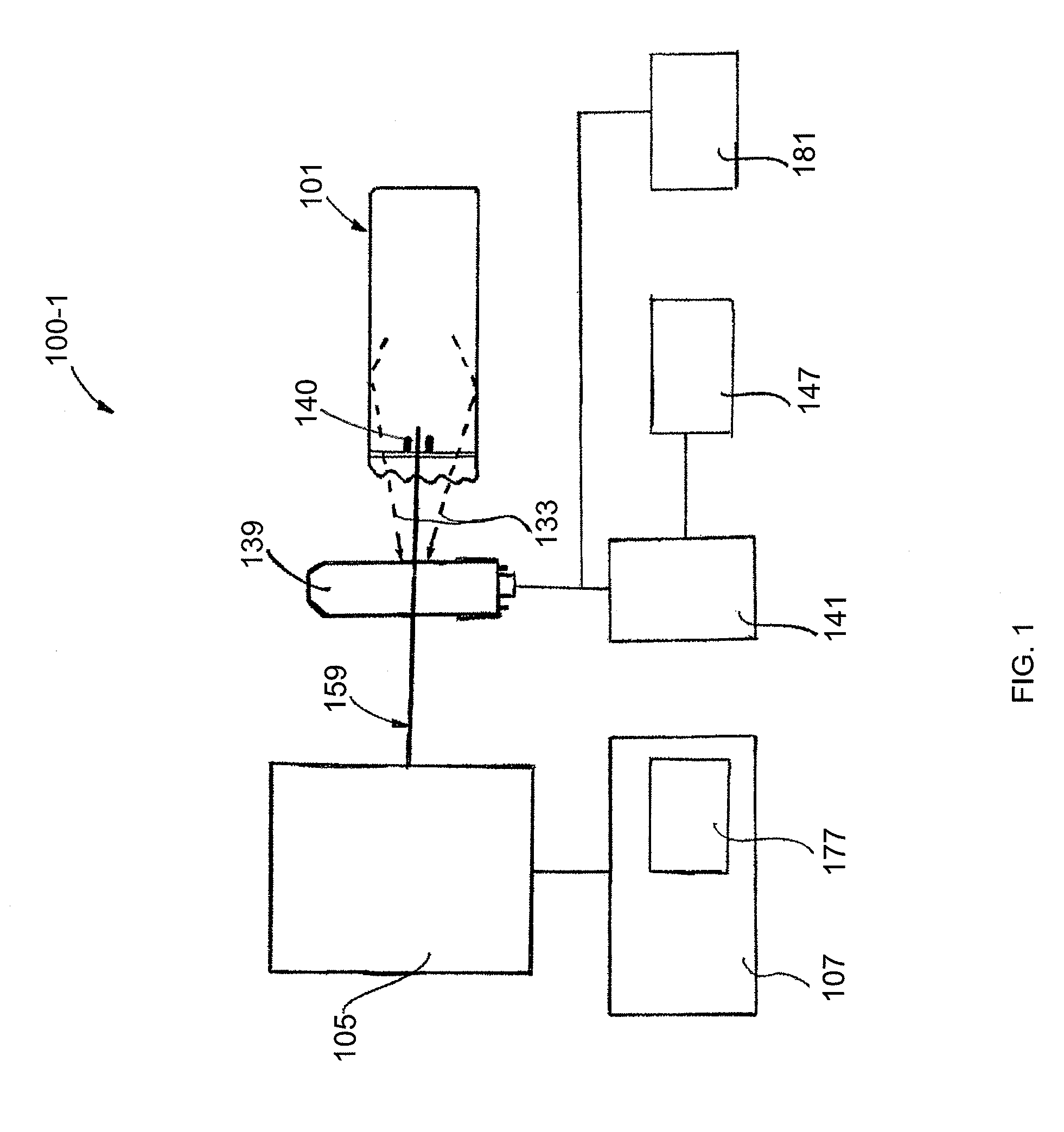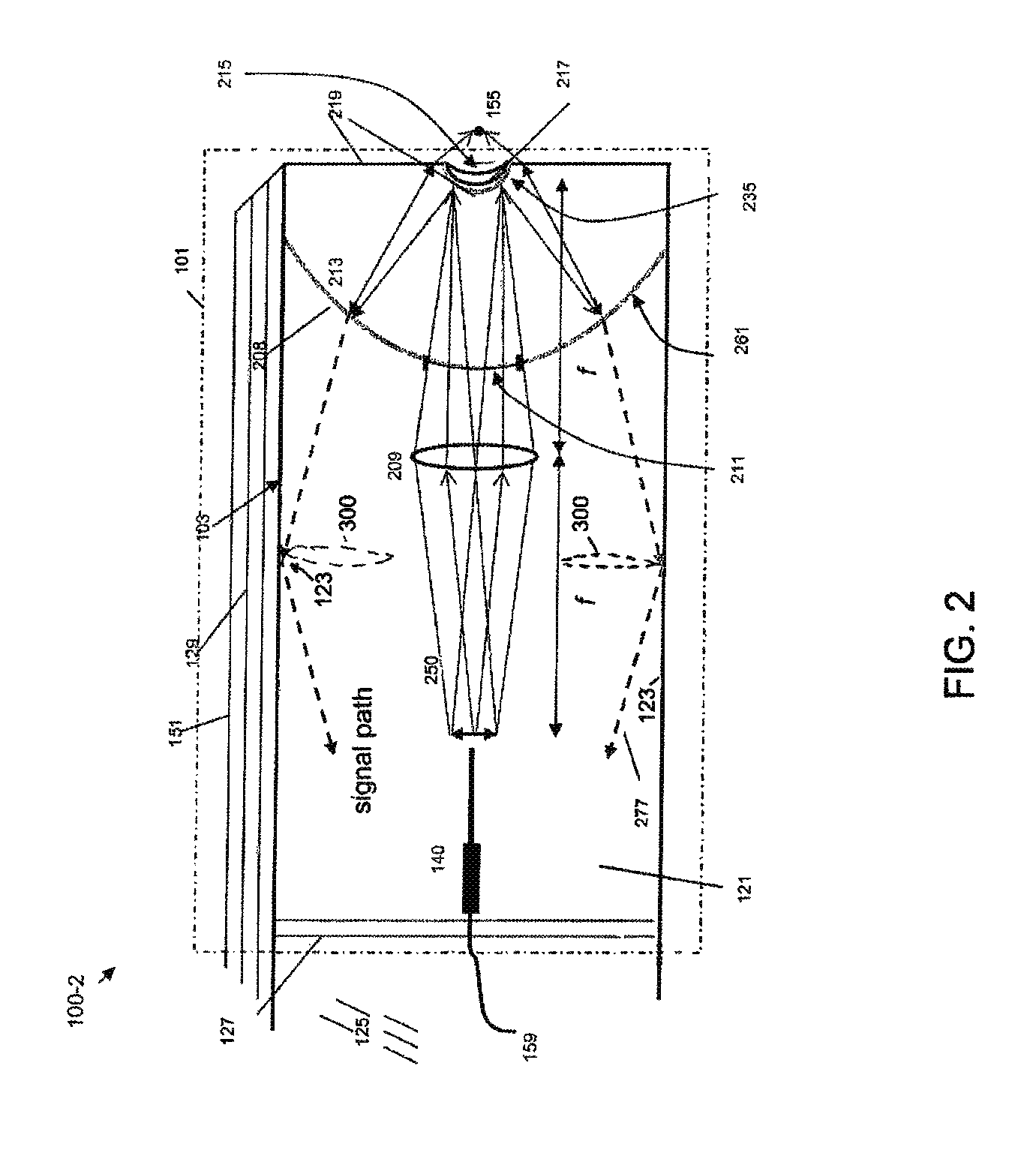Multi-path, multi-magnification, non-confocal fluorescence emission endoscopy apparatus and methods
a fluorescence emission endoscopy and multi-magnification technology, applied in the field of fluorescence emission and collection and/or imaging, and/or nonlinear harmonic emission collection and/or imaging, can solve the problems of non-uniform spatial coverage and sampling time of resonant devices in comparison to current miniaturized raster scanners, and the use of high energy light could easily damage living tissue in the entire region of exposure, etc., to achieve the effect of reducing the size of the scan
- Summary
- Abstract
- Description
- Claims
- Application Information
AI Technical Summary
Benefits of technology
Problems solved by technology
Method used
Image
Examples
Embodiment Construction
[0092]Embodiments of the invention pertain generally to laser scanning, fluorescence emission microscopy systems and methods, and components, and applications thereof.
[0093]FIG. 1 shows a schematic diagram of a coaxial endoscope system 100-1 that is shown with a distal segment 101 that incorporates an optical system embodied by the invention. As described herein, the distal segment can be that of an endoscope or alternatively, may be a biopsy needle. The system is coaxial because, as shown, an optical fiber 159 that provides near IR target excitation light is coaxially surrounded, in part, by a light transmitting interior of the distal segment 101. The fluorescence emission endoscopy system 100-1 includes an illumination platform 105 that includes a suitable fluorescence emission excitation source such as a femtosecond, pulsed laser and a source of visible target illumination. An illumination platform control module 107 provides, for example, pulse shape control, beam expansion, spa...
PUM
 Login to View More
Login to View More Abstract
Description
Claims
Application Information
 Login to View More
Login to View More - R&D
- Intellectual Property
- Life Sciences
- Materials
- Tech Scout
- Unparalleled Data Quality
- Higher Quality Content
- 60% Fewer Hallucinations
Browse by: Latest US Patents, China's latest patents, Technical Efficacy Thesaurus, Application Domain, Technology Topic, Popular Technical Reports.
© 2025 PatSnap. All rights reserved.Legal|Privacy policy|Modern Slavery Act Transparency Statement|Sitemap|About US| Contact US: help@patsnap.com



